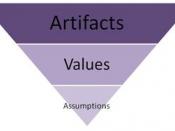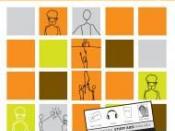IntroductionAn organization's atmosphere has a powerful influence on its organizational behavior; trends build from this behavior is what helps or hinders an organization from accomplishing their strategic objectives. This paper will look at two trends and their influences on the organizational behavior. The two trends are the influence of ethics on decision making, and the impact of technology on work-related stress.
Influence of Ethical Decision Making"Ethical decisions consider the short-term and long-term interest of the organization and its membersâ¦contributing to progress, growth, and success" (Deblieux, 1995, p.3). There are three criterions which need to be considered before an organization makes a decision. "The first is the utilitarian criterionâ¦which decisions are made solely on the basis of their outcomes or consequences" (Robbins, 2001) with an ultimate goal of providing the greatest good for the greater number. A good example is when an organization announces a plant shutdown; this is devastating news to those whose livelihood depends on the plant but the plant shutdown is a necessity in order for the organization to survive.
In this scenario the employees being laid-off are now part of new formed group in the organization, even though temporary, they are still a group which the organization must provide the greatest good for the greater number. The organization should provide severance packages along with assistance in either finding job or retraining in another field for those associates being laid-off.
The second criterion is rights, "this calls on individuals to make decisions consistent with fundamental liberties and privilegesâ¦such as the Bill of Rights" (Robbins, 2001). There is an emphasis on the individual's rights such as: right to privacy, free speech, and due process. Corporate whistleblowers that report unethical, fraud or illegal practices by their organization are protected under this criterion (Robbins, 2001). A good scenario is that...


